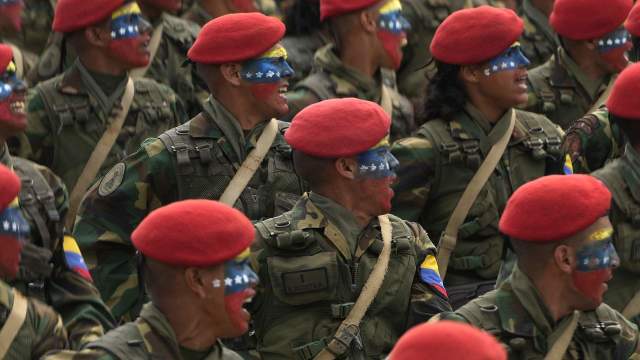The armies of the two countries are in different weight categories, but the beginning of the war is not predetermined, experts say
Venezuela has begun transferring military personnel to areas bordering Guyana. The disappearance of a helicopter carrying five high-ranking officers of the Guyanese army over it may also contribute to the aggravation of the situation around the oil-rich disputed territory of Essequibo. A few days ago, a referendum was held in Venezuela on the inclusion of Essequibo into the country, most of those who voted in favor. After this step, we can expect a new round of escalation, although it is unlikely to come to military action, experts say. Which of the countries is militarily stronger and whether the creation of coalitions is possible due to a territorial dispute is in the Izvestia material.
The tension is growing
Venezuela's armed forces will be involved in the development of the disputed territory of Essequibo, Defense Minister Vladimir Padrino Lopez said on December 7.
"We, a single authority and the armed forces, will work closely together and use all our logistical capabilities and human resources that have already been deployed in this sector. No rest, no breaks, we are all working together for our Guyana-Essequibo," he said on the social network X (ex. Twitter).
According to the head of the Ministry of Defense, "close work is already underway to ensure that the mandate issued by the people of Venezuela is fulfilled." He was referring to the results of the referendum that took place in the country on December 3. The next day, the authorities announced that more than half of Venezuelan citizens with the right to vote took part in it, and almost 96% of them supported the country's claims to the territory of Essequibo.
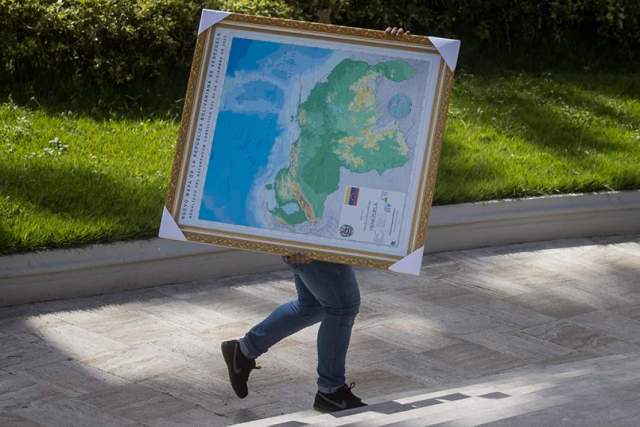
A man carries a map of Venezuela before a meeting of the National Assembly dedicated to the adoption of a law on the annexation of the disputed territory with Guyana — the Essequibo region
Image source: Photo: TASS/EPA/MIGUEL GUTIERREZ
On December 7, the Guyana Defense Forces on the border with Venezuela lost contact with a helicopter carrying high-ranking military personnel. There were two crew members and five senior officers on board, who went to check the troops guarding the border area.
The Guyana Defense Forces said the incident was related to weather conditions. Other versions of what happened are not being considered yet.
Earlier, Guyana's President Irfaan Ali said that the actions of the Venezuelan authorities to create the country's 24th state pose a threat to its territorial integrity.
What is happening in the region is alarming for the rest of the continent. Earlier, the Brazilian Ministry of Defense announced the strengthening of the northern border, which it shares with Venezuela and Guyana.
The United States has stated that it fully supports Guyana in the fight against Venezuela's threat to annex its oil-rich western territory. On December 6, U.S. Secretary of State Anthony Blinken, during a telephone conversation with President of Guyana Irfaan Ali, confirmed Washington's position that this country has full sovereignty over the Essequibo region.
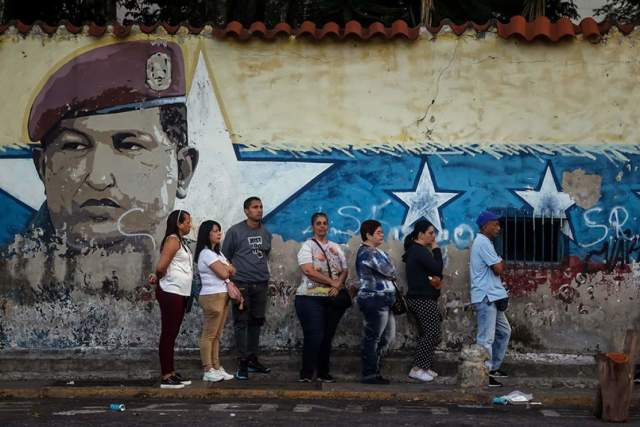
Queue at the voting center for the Essequibo referendum
Image source: Photo: TASS/EPA/MIGUEL GUTIERREZ
Oil is at stake
The dispute between Venezuela and Guyana over the ownership of an area of more than 159 thousand square kilometers has been going on for more than 100 years. It makes up more than two thirds of Guyana. And out of 800 thousand citizens of Guyana, 283 thousand people live there.
The old contradictions escalated after oil fields containing at least 10 billion barrels of oil were discovered on the shelf of Guyana in 2015. Guyana later granted concessions to ExxonMobil for offshore oil production, the boundaries of which are not delimited.
Is the beginning of the war real
What is happening should be considered as saber rattling, Viktor Kheifets, professor at the Faculty of International Relations at St. Petersburg State University, told Izvestia.
"Venezuela has transferred only 300 troops to the border areas," he explained. — A military operation requires 10-15 times more forces. Only they can afford to conduct full-fledged military operations. The Venezuelan authorities are well aware that their army is superior to the Guyanese, but there is no accumulation of units near the border. It will not be possible to concentrate large forces there because of the natural conditions. But most importantly, Venezuela will not be supported by other countries.
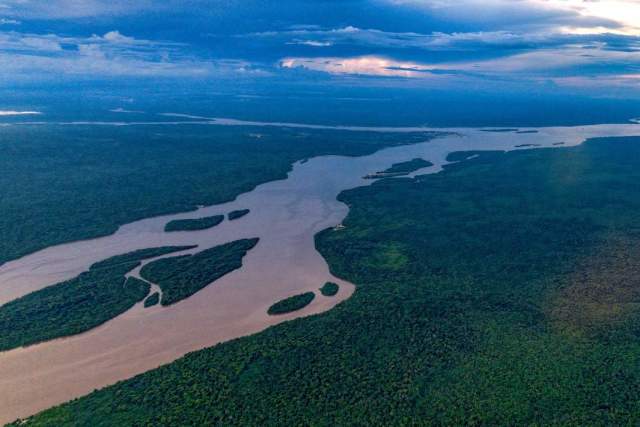
Essequibo River
Image Source: Photo: Commons.wikimedia.org/Dan Lundberg
It is not worth expecting large-scale military operations, especially the entry into hostilities of other countries, on one side or the other, experts noted.
According to Victor Heifetz, even Cuba, which has repeatedly supported Venezuela, is "more on the side of Guyana" in this issue.
"Brazil does not need an armed conflict on its borders," he said. — Colombia does not support Venezuela. India, which has always been the largest buyer of Venezuelan oil, is looking at what is happening with concern. Do not forget that in Guyana, 40% or even 50% of the population are ethnic Indians.
An armed conflict, according to Victor Heifetz, would dramatically complicate Venezuela's relations with the rest of the world. In addition, American sanctions, which were suspended only six months ago, will surely follow, which allowed local authorities to catch their breath and "feel better," he noted.
Different weight categories
The Venezuelan army could cope with the Guyanese without any problems, military expert Alexei Leonkov told Izvestia.
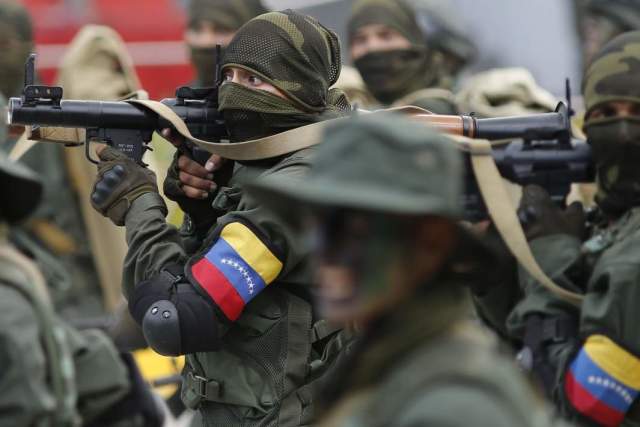
The Venezuelan Army
Image source: Photo: AP Photos/Ariana Cubillos
"From a military point of view, these countries are in different weight categories," he explained. — Guyana does not even have an army, but rather the police forces of the former British colony. She hopes for the help of the British or Americans. She can't stand alone.
There are about 3.5 thousand soldiers in the Guyana Defense Forces. They consist of land forces, air forces and coast guards.
The ground forces include an infantry battalion, a presidential security battalion, and support units, including sappers. They are armed with only nine armored vehicles, six artillery pieces and several dozen mortars.
About 200 people serve in the country's Air Force. They consist of six light transport and several combat helicopters. The Coast Guard also has 200 people who serve five patrol boats.
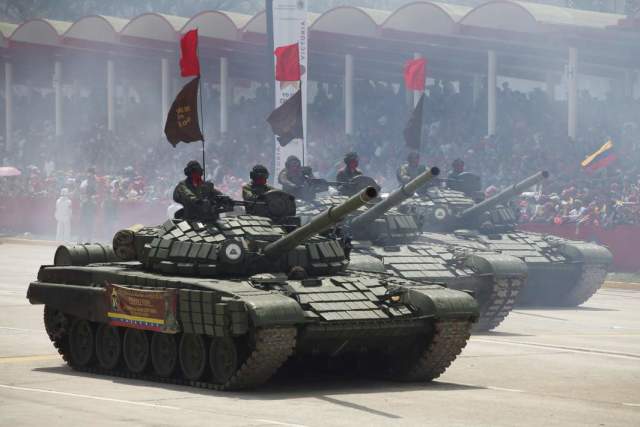
T-72 tanks in service with Venezuela
Image Source: Photo: Commons.wikimedia.org/Ricardo Patiño
At the same time, the Venezuelan army has 123 thousand people. Its ground forces include six divisions and a parachute infantry brigade.
There are about 300 tanks in service, including the Russian T-72, several hundred IFVs and armored personnel carriers. MLRS are represented by combat vehicles of various types, including "Grads" and "Tornadoes". They also have hundreds of artillery systems and mortars, Mi-35, Mi-26, Mi-17V-5 helicopters and others. The country's Air Force has 23 Su-30M and 12 American F-16s.
In addition, the country's Navy has two diesel-electric submarines and six Lupo-type missile frigates, amphibious, patrol, training ships and supply vessels.
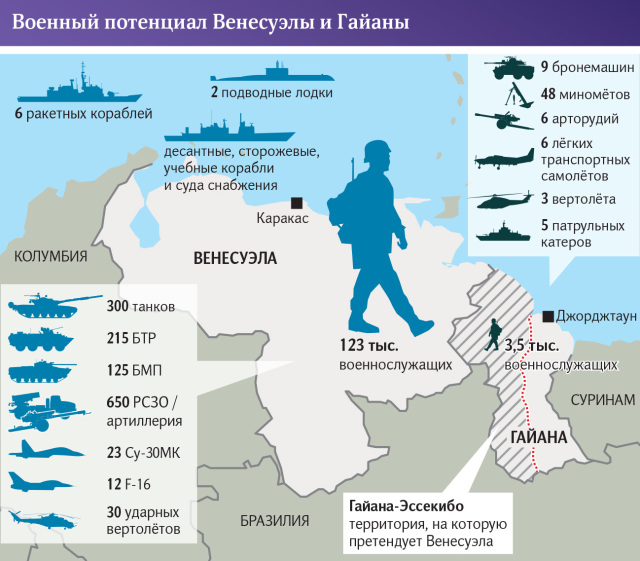
Russian weapons in Venezuela
Venezuela is one of Russia's largest and key partners in Latin America in the field of military-technical cooperation. In May 2001, an intergovernmental agreement was signed, according to which Russian weapons systems began to be exported to the South American country.
As a result, the country's army is almost completely equipped with Russian weapons and equipment.
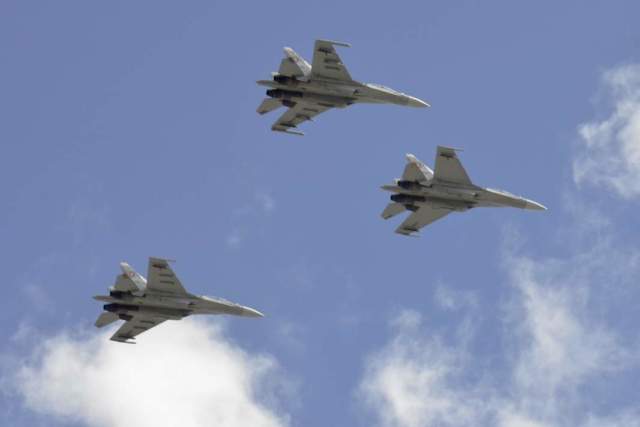
Su-30 aircraft in service with Venezuela
Image Source: Photo: Commons.wikimedia.org/Carlos Díaz
Its arsenals include Su-30 aircraft, combat and transport helicopters of the Mi brand, tanks, infantry fighting vehicles, rocket and artillery weapons, modern air defense systems, Kalashnikov assault rifles of the hundredth series.
In December 2018, joint military exercises between Russia and Venezuela were held with the involvement of two Tu-160 missile carriers, the An-124 heavy military transport and the long-range Il-62 of the Russian Aerospace Forces. They have attracted criticism from the United States.
Bogdan Stepovoy
Ekaterina Khamova
